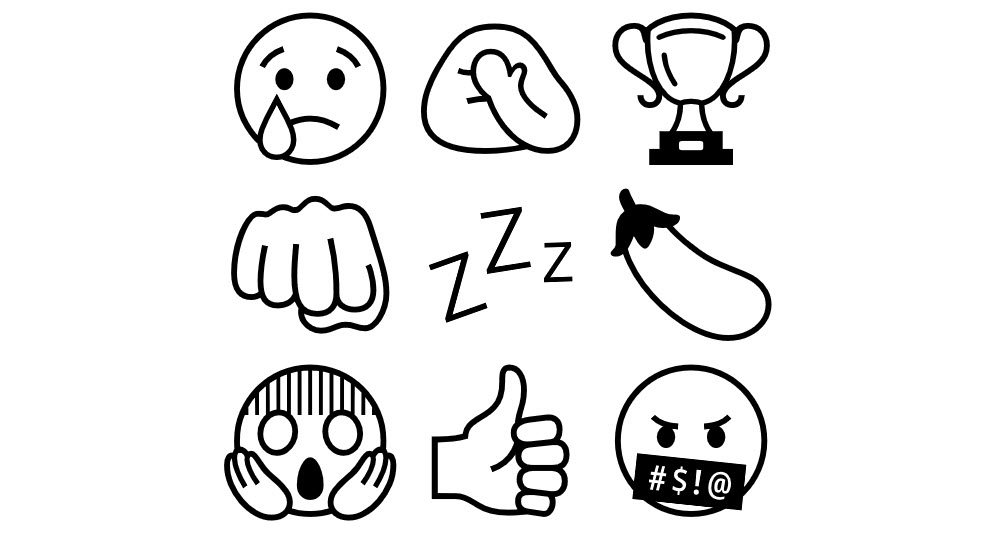Is it okay to use emojis in books?
Better yet: Is it wise to use emojis in books?
My dystopian sci-fi trilogy has an AI character that routinely uses emojis as part of its digital dialogue, and in the first book, it uses the nine emojis highlighted below. It’s one of the things that makes his dialogue unique.

But after writing it, I wondered if there were downsides to using emojis in books. After some research, here are some key issues people brought up, plus my thoughts:
- Books are printed in black, with few exceptions. This does make emojis less visually appealing, and perhaps less recognizable, too.
- The need to license an emoji font. I was initially using Segoe UI Emoji, which definitely has to be licensed. However, I found a comparable Google Font, Noto Emoji. All Google Fonts are open source, so I made the switch.
- Longevity and dating a book. Emojis are definitely a product of their time. That can be both good and bad. Emojis are a big part of casual modern communication, so they’d help reinforce a 2010’s and 2020’s setting. Beyond that, though, I’d argue that some emojis have well-established meanings that are likely to persist. For instance, it’s hard for me to imagine the eggplant emoji’s meaning changing at this point. It’s also difficult to imagine emojis falling out of the lexicon anytime soon, as language tends toward brevity and ease, something that’s evident with slang today.
- Clarity and shifting meanings. My eggplant emoji example aside, there are plenty of instances where the meaning of an emoji has changed. Also, a reader may not even be aware of the meaning of well-established emojis, especially if they’re from another culture. However, is that any different from a reader encountering a word or pop culture reference they’re unfamiliar with? As long as it’s not an overly frequent occurrence, they’ll just guess at the meaning by using context clues and move on. The same will be true for unfamiliar emojis.
- Audio book verbalization. If you’re doing an audio book version, this is definitely something to consider. Some emojis have cumbersome names, and that’s in addition to having to say “emoji” after each name. However, why not exercise some creative license? For instance, in the Noto Emoji font, the eggplant emoji is called “Aubergine.” But in the audio book script, I’ll just specify that it be called “eggplant emoji.” Same thing with Noto Emoji’s “Fisted Hand Sign,” which I’ll change to “fist bump emoji” in the script for greater clarity.
While those are all reasons to be thoughtful and constrained in your use of emojis, none of those are reasons to eliminate emojis from your writer’s toolbox. In the first book of my trilogy, emojis represented fewer than 20 characters out of more than 420,000 characters. That seems pretty constrained, while adding some levity and characterization.
To receive future posts or to become a Patron and support my dystopian sci-fi novel and get special thank-you goodies upon its publication, subscribe on Substack →